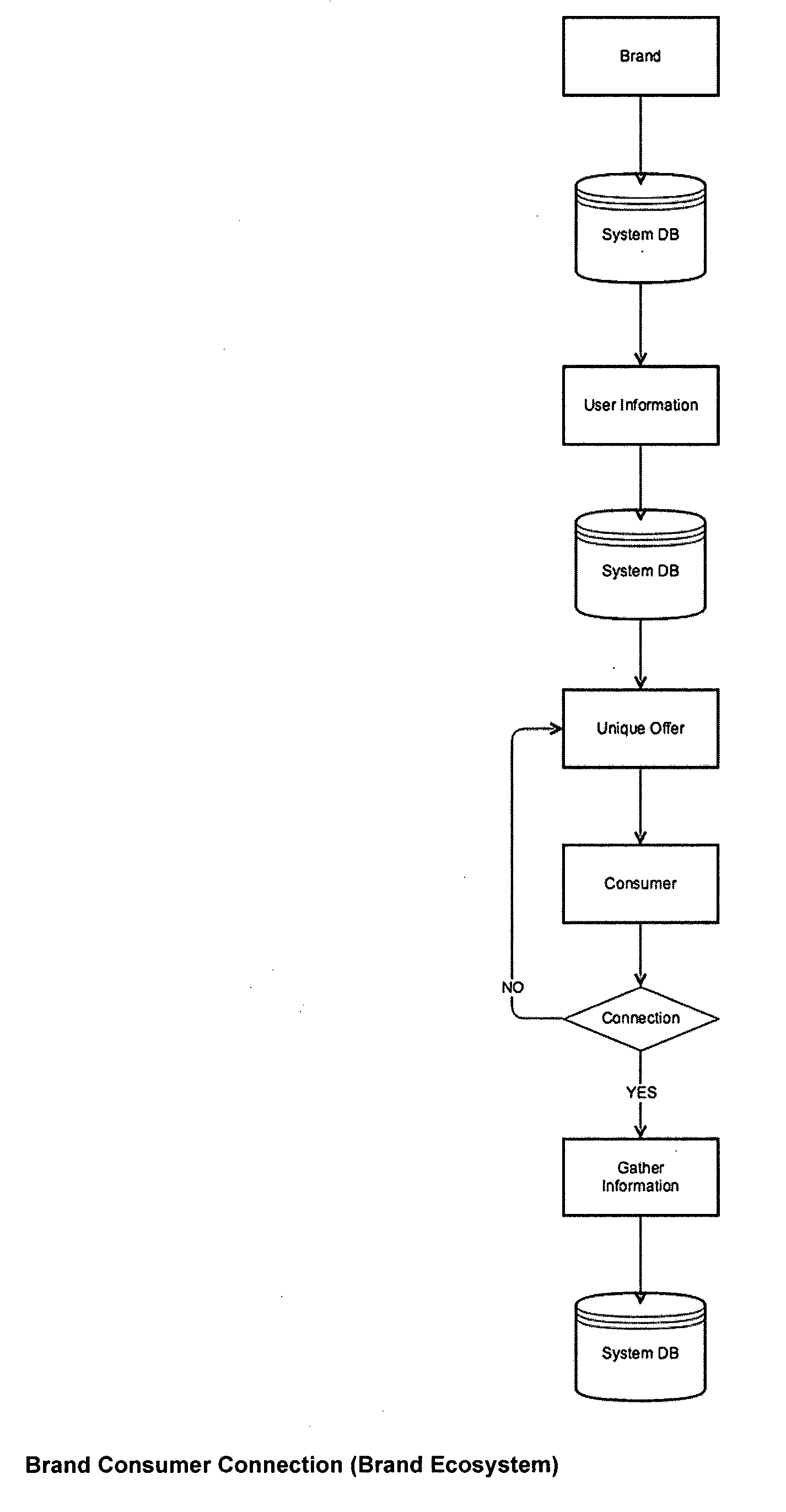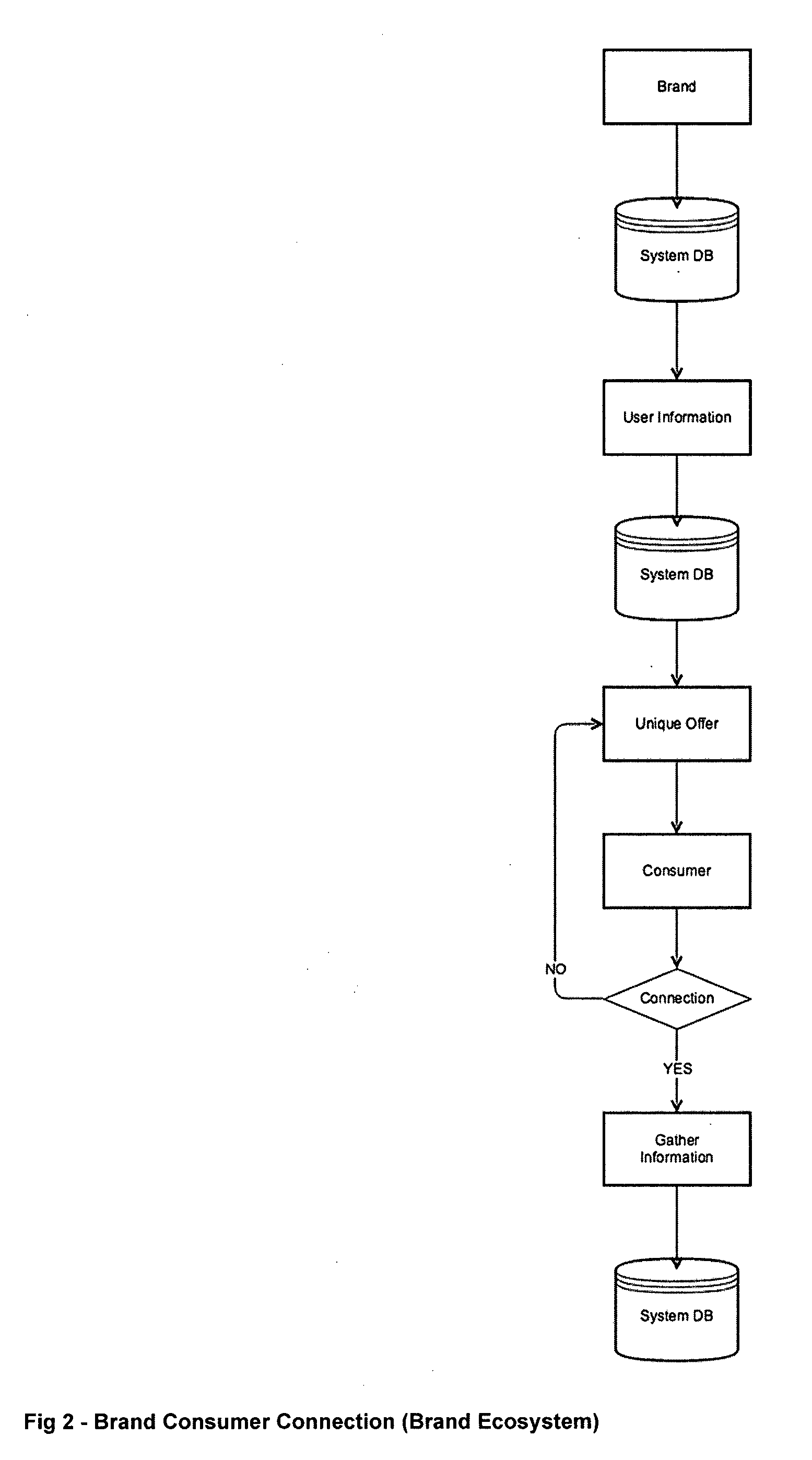People are facing fierce and intrusive consumer market where the competition by their attention and preference is extremely high consisting mainly of intrusive general communications and non-personalized offers.
The relationship between each one of these entities (Brands, People and Causes) is blind-sided, win-loss type (in order someone to win, someone has to loose) and unbalanced.
This kind of non-synergic and public third party relationship diminish the value Brands are able to generate with clients interactions, preference and behaviors; because Brands are not able to transform data in value or establish a relationship with their value chain and measure their productivity or to deal personally with their clients without putting in jeopardy their distribution channels.
Causes interact and communicate with Brands and People, using the same methods and channels as the Brands and have the same problems.
Brands are not able to measure, in real time, its productivity and efficiency, in each one of its departments, its marketing investments either online, offline, above or below the line or human resources.
Brands do not really know their actual or potential clients, because People do not see any value in interacting and exchanging private information.
All the interactions happen through third parties which causes a market barrier between Brands and People.
However Brands do not know individually know with whom they are communicating and are not able to collect individual information from each one of the People who were impacted with advertising, communications or offers.
Brands do not really know when clients area searching for their products, buying or trying to help a Cause.
Brands guess, try, try-again and use third party entities who provide the channel, but do not give access to who was impacted with their message or offer.
To sum up, Brands are not able to communicate with their actual and potential clients, with personalized messages and offers, according with their individual value for the Company, at the exact time and moment, without being intrusive, because they don't really know their clients and are not able to guess at all time what is their behavior attitude in the sales funnel or life cycle, in order to target it.
People have more and more difficulties in choosing the best option for their purchasing decision due to the fact that there are several different type of promotions in different sales channels with different prices and different offers, either from the same channel (upselling) or from different channels (cross selling).
However, they have budget limitations, they have doubts about the real destination of his donations, the satisfaction they have is of short term and it is time consuming and hard to make donations.
Causes strive to survive in a material and depressed world, consumer oriented, overloaded with information about tragedies events, natural tragedies, misery and other worthy Causes, all trying to catch the People attention and help, with little success.
People gratification for helping is off short in time, seldom valued by society and the economic resources are scarce.
There is a doubt in contributor's minds, if the donation given reaches their goal, due to corruption and efficiency issues.
The act of giving donations is normally time consuming, detailed and leads People to forget and pass on to another more pleasure and immediate activity.
Also the figures are so big, that People normally tend to think that their possible effort is so small that their effect will be too small, and forget and go on with their life.
Causes have difficulty in passing their message and raise funds to fulfill their mission.
Causes do not have a consistent and a measurable argument to raise money together with Brands.
There is no rational economic argument for Brands to help Causes, misery, natural catastrophes, or others worth worthy Causes.
However, the systems and methods disclosed in US 2002 / 0188509 A1, US 2006 / 0036484 A1 and US 2001 / 0049624 A1, per se or in combination thereof, do not allow the tracking of purchases by actual or potential consumers throughout the value chain of the company without the need of collaboration of third parties, namely retailers or distributors.
The system and methods disclosed in said prior art documents do not enable Brands to establish a qualified, personalized, relevant bidirectional relationship with actual and potential clients, with pre-established rules and targeted advertising and promotional offers according to consumer real profile (CRP), consumer social profile (CSP) and consumer life time value (CLTV).
The system and methods disclosed in said prior art documents do not enable Brands to know in real time the return of investment in each marketing action, to measure the productivity of each department, division, business, distribution channels, partners and employees.
The system and methods disclosed in said prior art documents do not allow Brands to reward consumers with offline and online transactions in any part of the world without any middleware, software and internet connection.
The system and methods disclosed in said prior art documents do not enable consumers to make donations directed to the charity institution and activity of their choice and to track those donations.
 Login to View More
Login to View More  Login to View More
Login to View More 


